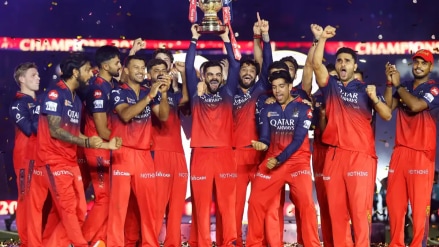The Indian Premier League (IPL) for the first time in its history has been hit with a decline in its ecosystem’s valuation for two consecutive years. The league’s valuation dropped by 8% from Rs 82,700 crore in 2024 to Rs 76,100 crore in 2025, as per a report by consulting and valuation services firm D and P Advisory. In 2023, the IPL’s valuation was Rs 92,500 crore.
The report attributes the decline to two major factors. The first decline was triggered by the merger of Disney Star and Viacom18, which created JioStar, consolidating TV and digital rights under one player. While the league still drew in record viewership, the prospect of a monopolised rights market signalled lower escalation in future auctions.
The 2025 decline is more structural in nature. With the Indian government’s ban on real money gaming this year, IPL’s most aggressive advertiser cohort that had contributed between Rs 1,500 and Rs 2,000 crore annually across broadcaster, franchise and league deals, has been eliminated. The double punch has created the first sustained downturn in IPL’s commercial history, reducing the league’s ecosystem value by nearly Rs 16,400 crore in just two years.
The same headwinds are also impacting the Women’s Premier League (WPL), which saw a 5.6% decline in its valuation from Rs 1,350 crore in 2024 to Rs 1,275 crore this year. Despite the decline in valuation, the report stresses that women’s cricket is no longer an experiment but a premier sporting platform in its own right.
Overall TV viewership increased by 142% year on year, making the WPL one of the country’s fastest-growing broadcast properties. Stadiums were filled across venues, with travel data showing surges in bookings to WPL host cities during match windows.
The IPL also continued to be the most watched cricket league in the world, with 1 billion viewers tuning in during this season. Over 425 advertisers participated across 40 unique categories, of which 270 were debutants.
Among the franchises, Royal Challengers Bangalore (RCB), which picked up the trophy for the first time this year, has become the league’s strongest brand, climbing up from the number four spot last year. Mumbai Indians and Chennai Super Kings were placed second and third this year.
Santosh N, managing partner at D and P Advisory observed that engagement during the IPL has been strengthened by regional language streams, connected TV adoption, and interactive formats. However, the IPL’s growth model is now shifting. “With auction-driven surges less likely, future valuations will depend on diversified sponsor bases such as auto, fintech, healthcare and esports. They will also depend on new monetisation models in the form of subscription bundles and commerce integration, as well as on the entry of global tech players such as Netflix and Amazon to restore competitive tension in the media rights auctions,” remarks Santosh.
The report underscores that both leagues reveal the new economics of cricket. Scale and reach are no longer in doubt—the IPL and WPL together draw well over a billion viewers, fill stadiums, and dominate cultural conversations. What is in flux is the architecture of value – who pays, how much, and under what conditions. The challenge now is to re-engineer revenue streams, nurture diversified sponsor bases and leverage digital innovation to sustain long-term compounding. The coming decade will be about building resilience for both properties.
